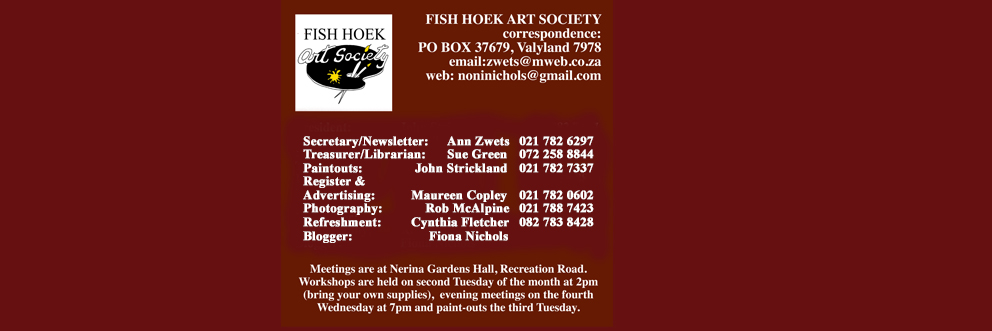We have John S to thank for a large number of works with a limited palette and some very useful comments. See below. Thanks too to the other members who took up the challenge.
Whether it is easy - or not - the exercise is an excellent one. And anyone who takes painting seriously will benefit enormously from learning about mixing their different hues. It may seem a bit tedious but a half hour spent making a couple of colour charts is time very well worth spending.
You'll note that some colours can be super delicate and other combinations (especially in oil or acrylics) can be very forceful and give impact to a work.
John has provided us with an interesting list of combined hues which you might enjoy experimenting with:
1) Utramarine Blue, Gamboge Yellow, Cadmium Red
2) Mauve, Quinacridone Gold, Turquoise
3) Burnt Sienna, Yellow Ochre, Paynes Grey
4) Light Red, Indigo, Yellow Ochre
5) Cadmium Orange, Cobalt Violet, Viridian Green - a very delicate blend of hues
6) Carmine Red, Lemon Yellow, Phthalo Blue
7) Quinacridone Rose, Cerulean Blue, Lemon Yellow - works well for flowers
8) Burnt Sienna, Yellow Ochre, Paynes Grey - if you are following the steps of the 'Old Masters'
9) Alizarin, Cadmium Orange, Ultramarine Blue - good range, very solid for landscapes
10) Light Red, Gamboge Yellow, Indanthrene Blue
Below is a colour chart for Permanent Rose, Cadmium Yellow and Cobalt Blue - another combination.
Have a look at all the paintings - the first EIGHT are by John - and note the colours used. It is very interesting.
This was the chart we included last time with six colours for acrylic painters but is valid for watercolour artists too - a perfect carry-anywhere selection of hues. Two warm and two cool versions of each primary colour.
Anne Puren starts us off with her peaceful subject in oil paints:
Followed by Maugie with her red acrylic poppies:
Cynthia was rather more ambitious in watercolour and used the full four tubes:
Nicky gave us a more delicate picture in three different watercolours.
Fiona headed back into acrylics for her pic.
I do hope I didn't leave anyone out! If so, please shout.
We're not judging quality here but the intriguing use of minimal amount of hue to create an exciting range of colours.
There is a suggestion to put out a challenge with just two colours.
We'll think about that!!
The next challenge, with a deadline of OCTOBER 18, is SPRING. Please forward your new original works to noninichols@gmail.com
And if you would care to do this again in FOUR COLOURS - John's colour combinations above might well inspire you - then please do so and tell us which colours you chose.
Happy painting to all. And keep washing your hands!
























